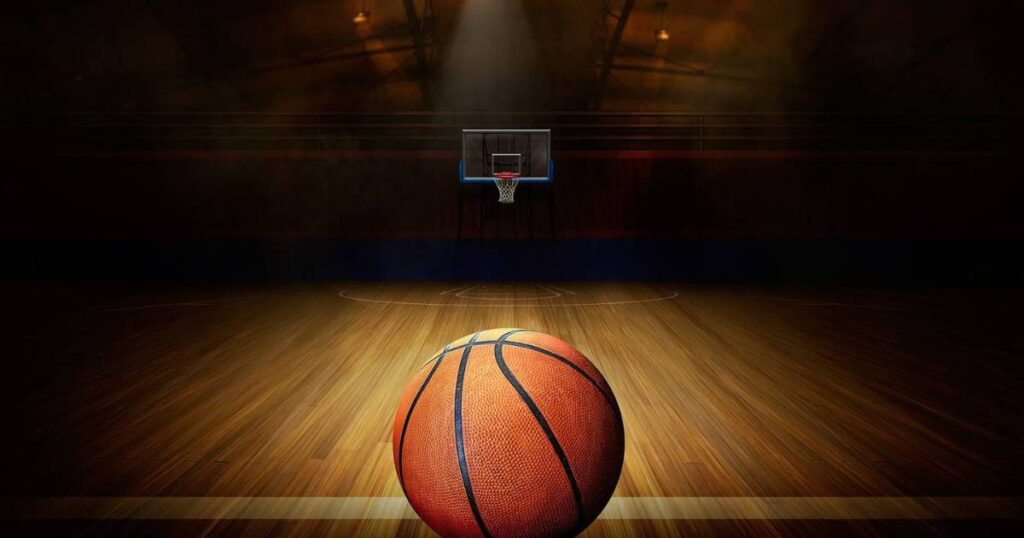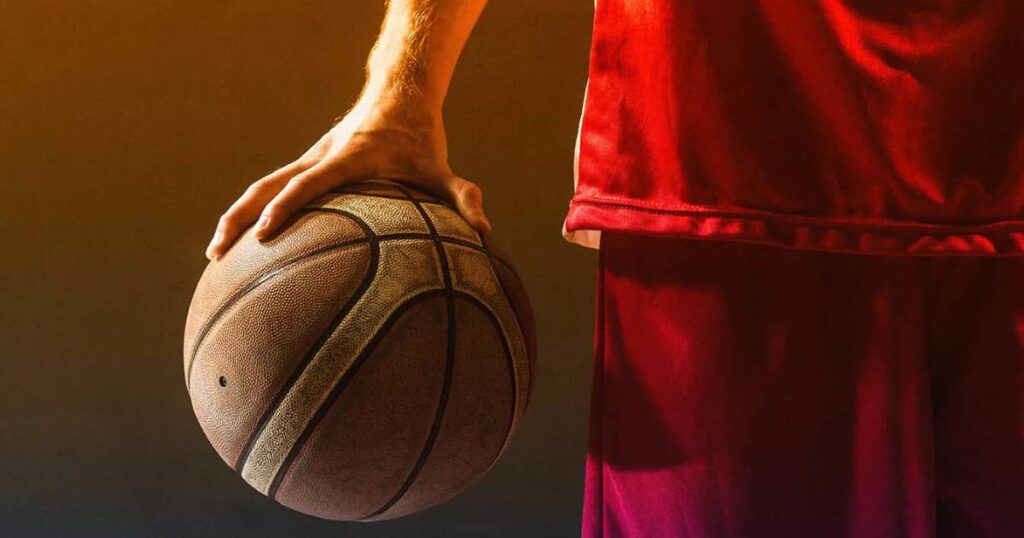drawing:cul23ybyzfm= basketball Drawing basketball scenes allows you to immortalize the electrifying energy and dynamic movements of this beloved sport.
Whether you’re an ardent fan yearning to capture the spirit of the game or an artist striving to elevate your skills, this guide will meticulously walk you through the essentials.
From grasping the fundamentals to mastering advanced techniques, you’ll embark on a journey that intertwines passion and creativity.
Understanding Basketball
To breathe life into your basketball art, it’s crucial to develop a profound understanding of the game itself.
This foundational knowledge will infuse your drawings with authenticity and depth, enabling you to captivate both devoted fans and casual observers alike.
Brief History of Basketball
Basketball traces its roots back to 1891 when Dr. James Naismith, a physical education instructor, invented the game using peach baskets as makeshift goals.
Originally conceived as an indoor pursuit, basketball rapidly evolved into a global phenomenon, transcending boundaries and captivating millions worldwide.
Appreciating this rich history will imbue your artwork with a sense of reverence and a deeper connection to the sport’s origins.
Key Rules and Regulations
Familiarizing yourself with the essential rules and regulations is pivotal to creating accurate and engaging drawings.
Basketball is played on a rectangular court, with two teams of five players each striving to score points by propelling the ball through the opponent’s hoop.
Grasping these fundamental principles will lend credibility to your artwork, ensuring that even the most discerning basketball enthusiast will appreciate the authenticity of your depictions.
Major Leagues and Tournaments
Basketball’s global appeal is exemplified by its diverse array of major leagues and tournaments.
The NBA (National Basketball Association) and WNBA (Women’s National Basketball Association) are among the most prestigious professional leagues, attracting elite talents from around the world.
International competitions like the FIBA World Cup also showcase the sport’s global reach. Each league and tournament possesses its unique flair, providing a rich tapestry of inspiration for your artistic endeavors.
The Art of Drawing Basketball
Why Draw Basketball Scenes?
Drawing a basketball scene offers a multitude of compelling reasons. For fans, it presents an opportunity to immortalize their cherished moments and express their unwavering devotion to the sport.
For artists, it serves as a canvas to hone their skills, capturing the dynamic movements and intricate details that define the game.
Tools Needed for Drawing
To embark on your artistic journey, assembling the right tools is essential. Here’s a checklist of the essential items you’ll need:
- Pencils (HB, 2B, 4B): Varying lead densities allow for diverse shading techniques and line weights.
- Erasers: Indispensable for refining and correcting your work as you progress.
- Drawing paper: Opt for high-quality paper that can withstand repeated erasing and layering.
- Rulers: Crucial for achieving precise lines and accurate court dimensions.
- Optional: Colored pencils, markers, or digital drawing tools (e.g., graphics tablets, software) for adding vibrancy and exploring new mediums.
Basic Techniques for Beginners
As with any artistic pursuit, mastering the basics is the foundation upon which you’ll build your skills.
Start by practicing simple sketches, focusing on fundamental shapes like circles, lines, and ovals. This exercise will familiarize you with your tools and develop essential muscle memory.drawing:cul23ybyzfm= basketball
Drawing Basketball Players
Proportions and Anatomy
To breathe life into your basketball players, a deep understanding of human anatomy and proportions is paramount.
Relationships between various body parts, how muscles interact and shift during movement, and the subtle nuances that distinguish one athlete from another.
Immerse yourself in reference materials, such as photographs, videos, or even live observations at local games.
Capturing Movement and Action
Basketball is a sport defined by its dynamic movements and high-intensity action. To capture the essence of the game, you must master the art of depicting motion.
How players move during various phases of the game jumping, running, shooting, and pivoting. Observe the intricate interplay of muscles and the fluidity of their movements.
Tips for Drawing Realistic Players
While technical proficiency is essential, infusing your drawings with realism extends beyond mere anatomical accuracy.
Pay close attention to the finer details that breathe life into your subjects:
- Facial expressions: Capture the intensity, focus, or elation etched on a player’s face during pivotal moments.
- Clothing and equipment: Accurately depict the texture of jerseys, the folds and creases that occur during movement, and the nuances of athletic gear.
- Interaction with the environment: Illustrate how a player’s body interacts with the court, the ball, and even the air itself, creating a sense of immersion in the scene.
Practice drawing players from various angles and perspectives, as this versatility will enable you to create dynamic compositions that engage the viewer from multiple vantages.
Drawing Basketball Courts

Layout of a Basketball Court
The basketball court serves as the canvas upon which the game’s action unfolds. To accurately depict this environment, familiarize yourself with the court’s layout and dimensions. The positioning of key elements such as the three-point line, the key (or lane), and the hoop’s precise location.drawing:cul23ybyzfm= basketball
Perspective and Scale
Mastering perspective techniques is crucial for creating realistic basketball court drawings. Practice drawing courts from various angles, employing vanishing points and horizon lines to establish a sense of depth and scale. This will allow you to create dynamic compositions that draw the viewer’s eye into the scene.
Adding Details and Textures
To truly bring your basketball court drawings to life, incorporate intricate details and textures. Wood grain of the court surface, the texture of the painted lines, and the subtle markings that distinguish one court from another.
Drawing Basketball Equipment
Drawing the Basketball
Basketball itself is an iconic symbol of the sport, and mastering its depiction is a rite of passage for any aspiring basketball artist.
Begin with a simple circle, gradually refining the shape and adding intricate details like the seams and textured surface.
Drawing Hoops and Nets
The hoop and net present a unique challenge for basketball artists due to their intricate details and complex shapes.
Begin by breaking down the hoop into basic geometric forms, such as a circle for the rim and a cylinder for the backboard.
Once you have the foundational shapes in place, gradually add the finer details like the net’s intricate weave and the support structure.
Read More Blog:
The Ultimate Guide To Black Wallpaper: Exploring Dazevovfbdw
Incorporating Other Equipment
To create a truly immersive basketball scene, consider incorporating additional equipment beyond just the ball and hoop.
Elements like scoreboards, benches, and even the players’ sneakers can add context and authenticity to your drawings.drawing:cul23ybyzfm= basketball
Incorporating Color
Choosing the Right Colors
Color plays a pivotal role in capturing the vibrancy and energy of the basketball world. When selecting your color palette, consider the official team colors of the players or franchises you’re depicting.
Accurately representing these hues can lend an authentic touch that resonates with fans and enhances the overall impact of your artwork.
Techniques for Coloring
Once you’ve chosen your color palette, explore various techniques to bring your drawings to life. Layer colors to build depth and dimension, starting with a base hue and gradually adding shadows and highlights.
Adding Shadows and Highlights
Shadows and highlights are the key to transforming flat, two-dimensional drawings into dynamic, three-dimensional masterpieces.
How light interacts with various surfaces and objects within your scene, casting shadows and creating highlights that enhance depth and realism.
Advanced Drawing Techniques
Dynamic Poses and Action Shots
As your skills progress, challenge yourself by depicting dynamic poses and high-energy action shots. Professional basketball games, photographs, and videos to observe the intricate movements and contorted body positions that players assume during intense moments.
Embrace the energy and excitement of the game, and let your drawings reflect the intensity that captivates millions of fans worldwide.
Detailing Uniforms and Logos
The uniforms and logos worn by basketball players are not mere accessories; they are integral components of the sport’s identity and culture. Pay close attention to the intricate details that distinguish one team’s uniform from another, such as the unique color schemes, patterns, and emblems.
Creating a Complete Scene
As your skills continue to grow, challenge yourself by creating complete, cohesive scenes that capture the essence of the basketball experience. Combine all the elements you’ve mastered – players, courts, equipment, and more – into a single, harmonious composition.
Share your completed scenes with others, and seek feedback to continue refining your craft. Each masterpiece you create will be a testament to your dedication and passion for this exhilarating sport.
Digital Drawing for Basketball
Digital Tools and Software
In today’s technologically advanced world, digital tools have opened up a realm of new possibilities for basketball artists. Powerful software like Adobe Photoshop, Illustrator, and Procreate offer a vast array of brushes, layers, and editing capabilities that can enhance your creative process.drawing:cul23ybyzfm= basketball
Advantages of Digital Drawing
Digital drawing offers several advantages over traditional mediums, including the ability to easily correct mistakes, experiment with different styles and effects, and work on multiple layers simultaneously.
Tips for Digital Artists
If you’re venturing into the realm of digital drawing, here are some tips to help you make the most of these powerful tools:
- Utilize Layers: Separate different elements of your drawing onto distinct layers, such as players, courts, and equipment. This organizational approach makes it easier to edit and adjust specific components without affecting the entire piece.
- Explore Brushes and Textures: Digital software often includes a vast library of brushes and textures that can emulate traditional mediums or create unique, digital-only effects. Experiment with these tools to find styles that resonate with your artistic vision.
- Backup and Organize: Regularly back up your work and organize your files in a logical manner. Digital art files can be easily lost or corrupted, so it’s crucial to have a reliable backup system in place.
- Learn Shortcuts and Hotkeys: Familiarize yourself with keyboard shortcuts and hotkeys specific to your chosen software. These time-saving techniques can streamline your workflow and increase productivity.
- Embrace the Learning Curve: Like any new medium, digital drawing may require a adjustment period. Embrace the learning curve, seek out tutorials and resources, and don’t be discouraged by initial challenges. With practice and persistence, you’ll master these powerful tools.
Common Mistakes and How to Avoid Them
Proportion Errors
One of the most common pitfalls in drawing a basketball scenes is inaccurate proportions. Whether it’s the dimensions of the court, the relative sizes of players and equipment, or the anatomical proportions of the human figure, even slight errors can detract from the overall realism and impact of your work.
Overcomplicating Details
While attention to detail is crucial in creating realistic basketball drawings, it’s important to strike a balance and avoid overcomplicating your work. Excessive detailing can clutter your composition, overwhelm the viewer, and detract from the overall essence of the scene.
Tips for Improvement
Continuous improvement is the key to mastering any artistic discipline, and drawing a basketball scenes is no exception. Embrace the following practices to elevate your skills:
- Continuous Practice: Dedicate consistent time to practicing your drawing skills. Set aside a specific time each day or week to focus solely on your craft, as regular practice is essential for developing muscle memory and refining your techniques.
- Study Other Artists: Analyze the work of professional basketball artists and illustrators. Take note of their styles, techniques, and the unique ways they capture the energy and essence of the game. Use their work as inspiration, but ultimately develop your own distinct artistic voice.
- Seek Feedback: Don’t be afraid to share your work with others and ask for constructive feedback. Join online art communities or local groups where you can receive critiques and suggestions from fellow artists and mentors. This valuable input can help you identify areas for improvement and grow as an artist.
- Embrace Mistakes: Mistakes are an inevitable part of the learning process. Instead of becoming discouraged, view each misstep as an opportunity to learn and improve. Analyze what went wrong and use that knowledge to refine your techniques and deepen your understanding.
Remember, the journey to mastery is a continuous process of learning, practicing, and refining your skills. Embrace this mindset, and you’ll continue to create increasingly impressive basketball drawings that capture the spirit of the game.
Inspirational Examples
Famous Basketball Artworks
To gain inspiration and appreciation for the art of drawing a basketball scenes, explore the works of renowned artists who have mastered this genre.
Leroy Neiman, for example, is celebrated for his vibrant, expressionist depictions of athletes in motion, capturing the raw energy and excitement of sporting events.
Artists to Follow
In addition to studying the works of established masters, follow contemporary artists who specialize in basketball and sports art.
Many of these artists actively share their work, processes, and tips on social media platforms, providing a wealth of inspiration and guidance.
How to Find Inspiration
Inspiration can strike from a multitude of sources, both within and beyond the world of basketball.
Attend live games and practices to witness the raw energy and intensity of the sport firsthand. Photographs and videos, paying close attention to the intricate details and movements that might otherwise be missed in real-time.
Sharing Your Work
Building a Portfolio
As your collection of basketball drawings grows, consider curating a SHOWCASE YOUR EXPERIENCE WITH A CAREER PORTFOLIO your best work.
This portfolio can take the form of a physical book or a digital collection hosted on platforms like Behance or your own personal website.drawing:cul23ybyzfm= basketball
Using Social Media
In today’s digital age, social media platforms have become powerful tools for artists to share their work, connect with audiences, and gain exposure.
Platforms like Instagram and Twitter allow you to build a following of basketball enthusiasts and art lovers alike, sharing your progress and showcasing your most impressive pieces.
Engaging with the Art Community
Beyond social media, seek out local or online art communities where you can collaborate, participate in challenges, and exchange feedback with fellow artists.
These groups can provide a supportive environment for growth, as well as opportunities for networking and potential collaborations.
Practice and Persistence
Importance of Regular Practice
Like any skill, mastering the art of drawing a basketball scenes requires consistent practice and dedication.
Set aside dedicated time each day or week to focus solely on your craft, whether it’s practicing specific techniques, completing timed exercises, or working on larger-scale compositions.
Setting Realistic Goals
To maintain motivation and track your progress, set realistic goals for your drawing practice.
These goals could range from mastering a particular technique, such as rendering realistic textures or capturing dynamic poses, to completing a certain number of sketches or finished pieces within a specified timeframe.
Tracking Your Progress
As you embark on your artistic journey, it’s essential to document your progress. Keep a sketchbook or digital folder dedicated to your basketball drawings, dating each piece and noting any specific techniques or challenges you encountered.
Learning from Critique
Seeking Feedback
No artist exists in a vacuum, and seeking feedback from others is a crucial part of the learning and growth process.
Don’t be afraid to share your work with fellow artists, mentors, or even knowledgeable basketball fans, and ask for their honest critiques and suggestions.
Constructive Criticism
When receiving critique, it’s important to approach it with an open mind and a willingness to learn.
Constructive criticism is not a personal attack but rather a valuable opportunity to gain new perspectives and insights.
Using Critique to Improve
Once you’ve received constructive feedback, take the time to reflect and develop an action plan for improvement. Identify the areas that require the most attention and prioritize them in your practice sessions.
Remember, the ability to graciously accept and learn from critique is a hallmark of a true artist.
Embrace this process, and you’ll continually elevate your skills, creating basketball drawings that not only capture the essence of the game but also resonate with audiences on a deeper, emotional level.
Final Thoughts
drawing:cul23ybyzfm= basketball Drawing a basketball scenes is a powerful way to immortalize the energy, passion, and raw athleticism of this beloved sport.
Whether you’re a devoted fan seeking to capture cherished moments or an artist striving to push the boundaries of your craft, this comprehensive guide has provided you with the tools and techniques to create compelling and realistic basketball artwork.

Ava, boasting five years in home blogging, shares expertise in domestic living. With a sharp eye and passion for details, she navigates home decor and lifestyle intricacies effortlessly.







